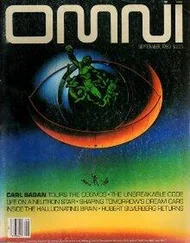Robert Silverberg - Getting to Know the Dragon
Здесь есть возможность читать онлайн «Robert Silverberg - Getting to Know the Dragon» весь текст электронной книги совершенно бесплатно (целиком полную версию без сокращений). В некоторых случаях можно слушать аудио, скачать через торрент в формате fb2 и присутствует краткое содержание. Год выпуска: 2003, ISBN: 2003, Издательство: HarperCollins, Жанр: Альтернативная история, на английском языке. Описание произведения, (предисловие) а так же отзывы посетителей доступны на портале библиотеки ЛибКат.
- Название:Getting to Know the Dragon
- Автор:
- Издательство:HarperCollins
- Жанр:
- Год:2003
- ISBN:978-0-380-97859-5
- Рейтинг книги:5 / 5. Голосов: 1
-
Избранное:Добавить в избранное
- Отзывы:
-
Ваша оценка:
- 100
- 1
- 2
- 3
- 4
- 5
Getting to Know the Dragon: краткое содержание, описание и аннотация
Предлагаем к чтению аннотацию, описание, краткое содержание или предисловие (зависит от того, что написал сам автор книги «Getting to Know the Dragon»). Если вы не нашли необходимую информацию о книге — напишите в комментариях, мы постараемся отыскать её.
Getting to Know the Dragon — читать онлайн бесплатно полную книгу (весь текст) целиком
Ниже представлен текст книги, разбитый по страницам. Система сохранения места последней прочитанной страницы, позволяет с удобством читать онлайн бесплатно книгу «Getting to Know the Dragon», без необходимости каждый раз заново искать на чём Вы остановились. Поставьте закладку, и сможете в любой момент перейти на страницу, на которой закончили чтение.
Интервал:
Закладка:
His successor—he had outlived all his sons—was another Hispaniard of Tarraco, Gaius Julius Flavillus, a man of nobler birth than Flavius whose family fortunes may have underwritten the original Flavian rebellion. Gaius Flavillus was a forceful man in his own right and an admirable Emperor, but, reigning between two such mighty figures as Flavius Romulus and Trajan Draco, he seems more of a consolidator than an innovator. During his time on the throne, which covered the period from 2238 to 2253, he continued the maritime policy of his predecessor, though placing more emphasis on voyages to the New World than toward Africa and Asia, while also striving to create greater unity between the Latin and Greek halves of the Empire itself, something to which Flavius Romulus had devoted relatively little attention.
It was during the reign of Gaius Flavillus that Trajan Draco rose to prominence. His first military assignments seem to have been in Africa, where he won early promotion for his heroism in putting down an uprising in Alexandria, and then for suppressing the depredations of bandits in the desert south of Carthago. How he came to the attention of Emperor Gaius is unclear, though probably his Hispanic birth had something to do with it. By 2248, though, we find him in command of the Praetorian Guard. He was then only about twenty-five years old. Soon he had acquired the additional title of First Tribune, and shortly Consul too, and in 2252, the year before his death, Gaius formally adopted Trajan as his son and proclaimed him as his heir.
It was as though Flavius Romulus had been born again, when Trajan Draco, soon afterward, assumed the purple under the name of Trajan VII. In the place of the aloof patrician Gaius Flavillus came a second Hispaniard peasant to the throne, full of the same boisterous energy that had catapulted Flavius to greatness, and the whole world echoed to the resonant sound of his mighty laughter.
Indeed, Trajan was Flavius redone on an even grander scale. They were both big men, but Trajan was a giant. (I, his remote descendant, am quite tall myself.) He wore his dark hair to the middle of his back. His brow was high and noble; his eyes flashed like an eagle’s; his voice could be heard from the Capitoline Hill to the Janiculum. He could drink a keg of wine at a sitting with no ill effect. In the eighty years of his life he had five wives—not, I hasten to add, at the same time—and innumerable mistresses. He sired twenty legitimate children, the tenth of whom was my own ancestor, and such a horde of bastards that it is no unusual thing today to see the hawk-faced visage of Trajan Draco staring back at one in the streets of almost any city in the world.
He was a lover not only of women but of the arts, especially those of statuary and music, and of the sciences. Such fields as mathematics and astronomy and engineering had fallen into neglect during the two hundred years of the West’s subservience to the soft, luxury-loving Greeks. Trajan sponsored their renewal. He rebuilt the ancient capital at Roma from end to end, filling it with palaces and universities and theaters as though such things had never existed there before; and, perhaps for fear that that might seem insufficient, he moved on eastward into the province of Pannonia, to the little city of Venia on the River Danubius, and built himself what was essentially a second capital there, with its own great university, a host of theaters, a grand Senate building, and a royal palace that is one of the wonders of the world. His reasoning was that Venia, though darker and rainier and colder than sunny Roma, was closer to the heart of the Empire. He would not allow the partition of the Empire once again into eastern and western realms, immense though the task of governing the whole thing was. Placing his capital in a central location like Venia allowed him to look more easily westward toward Gallia and Britannia, northward into the Teuton lands and those of the Goths, and eastward to the Greek world, while maintaining the reins of power entirely in his own hands.
Trajan did not, however, spend any great portion of his time at the new capital, nor, for that matter, at Roma either. He was constantly on the move, now presenting himself at Constantinopolis to remind the Greeks of Asia that they had an Emperor, or touring Syria or Aegyptus or Persia, or darting up into the far north to hunt the wild shaggy beasts that live in those Hyperborean lands, or revisiting his native Hispania, where he had transformed the ancient city of Sevilla into the main port of embarkation for voyages to the New World. He was a tireless man.
And in the twenty-fifth year of his reign—A.U.C. 2278—he set out on his greatest journey of all, the stupendous deed for which his name will be forever remembered: his voyage around the entirety of the world, beginning and ending at Sevilla, and taking into its compass almost every nation both civilized and barbaric that this globe contains.
Had anyone before him conceived of such an audacious thing? I find nothing in all the records of history to indicate it.
No one has ever seriously doubted, of course, that the world is a sphere, and therefore is open to circumnavigation. Common sense alone shows us the curvature of the Earth as we look off into the distance; and the notion that there is an edge somewhere, off which rash mariners must inevitably plunge, is a fable suited for children’s tales, nothing more. Nor is there any reason to dread the existence of an impassable zone of flame somewhere in the southern seas, as simple folk used to think: it is twenty-five hundred years since ships first sailed around the southern tip of Africa and no one has seen any walls of fire yet.
But even the boldest of our seamen had never even thought of sailing all the way around the world’s middle, let alone attempting it, before Trajan Draco set out from Sevilla to do it. Voyages to Arabia and India and even Khitai by way of Africa, yes, and voyages to the New World also, first to Mexico and then down the western coast of Mexico along the narrow strip of land that links the two New World continents until the great empire of Peru was reached. From that we learned of the existence of a second Ocean Sea, one that was perhaps even greater than the one that separates Europa from the New World. On the eastern side of that vast ocean were Mexico and Peru; on its western side, Khitai and Cipangu, with India farther on. But what lay in between? Were there other empires, perhaps, in the middle of that Western Sea—empires mightier than Khitai and Cipangu and India put together? What if there were an empire somewhere out there that put even Imperial Roma into the shade?
It was to the everlasting glory of Trajan VII Draco that he was determined to find out, even if it cost him his life. He must have felt utterly secure in his throne, if he was willing to abandon the capital to subordinates for so long a span of time; either that, or he did not care a fig about the risk of usurpation, so avid was he to make the journey.
His five-year expedition around the world was, I think, one of the most significant achievements in all history, rivaling, perhaps, the creation of the Empire by Augustus Caesar and its expansion across almost the whole of the known world by Trajan I and Hadrianus. It is the one thing, above all else that he achieved, that drew me to undertake my research into his life. He found no empires to rival Roma on that journey, no, but he did discover the myriad island kingdoms of the Western Sea, whose products have so greatly enriched our lives; and, moreover, the route he pioneered through the narrow lower portion of the southern continent of the New World has given us permanent access by sea to the lands of Asia from either direction, regardless of any opposition that we might encounter from the ever-troublesome Mexicans and Peruvians on the one hand or the war-like Cipanguans and the unthinkably multitudinous Khitaians on the other.
Читать дальшеИнтервал:
Закладка:
Похожие книги на «Getting to Know the Dragon»
Представляем Вашему вниманию похожие книги на «Getting to Know the Dragon» списком для выбора. Мы отобрали схожую по названию и смыслу литературу в надежде предоставить читателям больше вариантов отыскать новые, интересные, ещё непрочитанные произведения.
Обсуждение, отзывы о книге «Getting to Know the Dragon» и просто собственные мнения читателей. Оставьте ваши комментарии, напишите, что Вы думаете о произведении, его смысле или главных героях. Укажите что конкретно понравилось, а что нет, и почему Вы так считаете.












